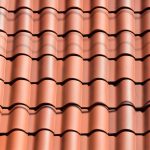
5 Best Drainage Solutions for Flat Roofs in San Antonio
When water invades a building, it can become dangerous in several ways. Soaked walls, floors, furnishings, etc. are prone to mold and mildew growth. Water can also compromise the integrity of important structural features.
You should want to keep your building water-free. This can be difficult to do if your building has a flat roof, but it isn’t impossible. Selecting the right drainage solution for your flat roofing can make your building safer.
Unfortunately, there are a lot of drainage solutions to choose from. You need to learn about some different drains for flat roofs to make the best decision. Read on to learn about five flat roof drain types.
Why Are Drains for Flat Roofs Important?
Rain easily flows off sloped roofs because of the angles of the sides. They form slick paths that help gravity pull the water toward the gutters. The water then collects in the gutter and flows out of the downspout.
It’s harder for rainwater to flow off flat roofs. Flat roofs aren’t, as most people may believe, flat. However, the angle that the surfaces of most flat roofs sit at is very shallow.
Rainwater tends to become standing water on a flat roof. This can cause numerous issues. It can attract pests, cause mold growth, break the scaffolding with its weight, and more.
A proper drainage system can make up for these risks.
Five Types of Flat Roof Drainage Systems
The gutters that you often see on the edges of sloped roofs can also be found around many flat roofs. However, this isn’t the only option for a drain system on a flat roof. It may also not be the best solution in many situations.
As mentioned, the shallow slope of a flat roof doesn’t always guide rain off a flat roof well. Therefore, sometimes it’s better to adjust slopes or place drains closer to the middle of the roof. You can learn more about these options and more in the list below.
1. Gutters
Gutters are open pipes placed around the edges of roofs. They collect the water that flows down the roof. Then they guide it down a downspout to the ground.
Gutters are usually cheaper to install than most other flat roof draining systems. They’re also great at guiding water away from the walls of the building. When water flows down the walls of a building, it causes damage over time.
However, the slopes have to be effective enough to carry rainwater to the edges. This can be an issue with wider and longer flat roofs. Rainwater is more likely to become standing water before it reaches the edges of this roof.
This isn’t too much of an issue when the flat roof has a small surface area. The water doesn’t have to travel far to get to the edges of this type of flat roof. You’ll probably see gutters on smaller flat roofs more often for this reason.
2. Scuppers
Scuppers can be best described as holes in the sides of parapet walls. This gives the water a place to go after it builds up. Often, the floors of scuppers will have a slope to guide the water away from the building.
Unfortunately, water can still flow out scuppers and down the sides of buildings. For this reason, scuppers are often used with gutters. Roofers will also often place downspouts on the outside of scuppers as well.
The scuppers should also have wider sizes. This will prevent them from clogging with larger pieces of debris.
3. Internal Drains
Internal drain systems consist of a pipe network just under the surface of the roof. Roofers install openings to this system throughout the surface of a flat roof. They often place many of these openings near the center where rainwater often pools.
These hidden pipes don’t negatively affect the aesthetic of the roof. However, they can leak and get clogged. Either of these situations can cause water damage issues in the building’s interior.
This shouldn’t be too much of an issue with proper repair and maintenance services. Roofers will also often place strainers on internal drain systems to prevent debris from falling in.
4. Siphonic Drainage Systems
Siphonic drainage systems have similar structures to internal drainage systems. The main differences between the two systems are that a siphonic system has fewer outlets and the pipes are more horizontal. Despite this, it drains water much faster than most flat roof drainage systems.
This happens because these systems use hydrophonic pressure to pull water away from the roof. This makes them well-equipped to handle frequent heavy rain. The horizontal placement of the pipes also makes them fit in more easily with several other systems.
The only issue many building owners deal with is the small diameter of these pipes. Debris can easily clog them.
5. Tapered Slope Insulation
Along with adding types of drains, some roofers will also install additional slopes using additional roofing materials. Sometimes this requires extensive construction under the roof. Other times, roofers can install the slopes on top of the existing flat roof structure using tapered insulation.
The latter is cheaper and best for owners not willing to undergo extensive construction projects. Roofers can simply fit the tapered insulation, available in easy-to-install panels, together on top of areas where water frequently pools. Tapered insulation can also act as bonus protection for the surface of the roof.
We Offer Roofing Services in San Antonio
You should probably do some more research on the drains for flat roofs mentioned here. You can also ask roofing experts about what they recommend for your situation. In this way, you’ll find the best drainage system for your flat roof.
If you need any help with installing a flat roof drainage system, consider our services. We offer all kinds of residential and commercial roofing services in San Antonio, TX. Request a free price estimate today by filling out the form on this page.













